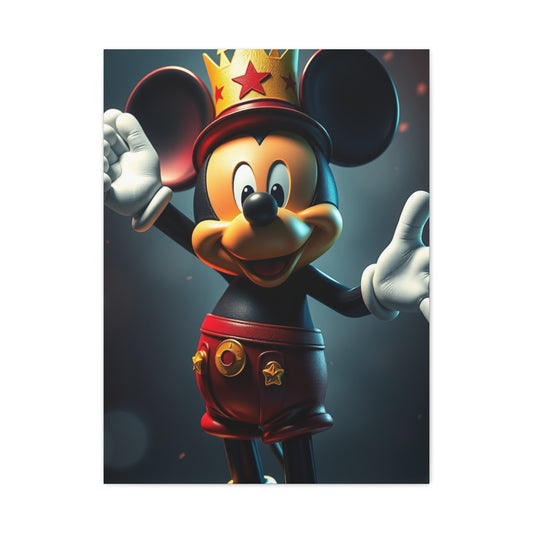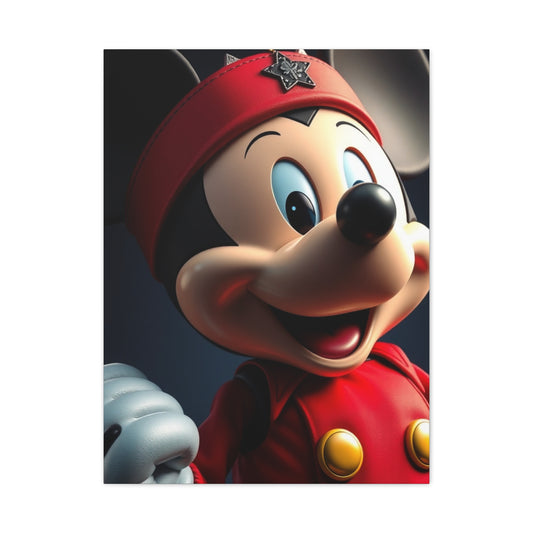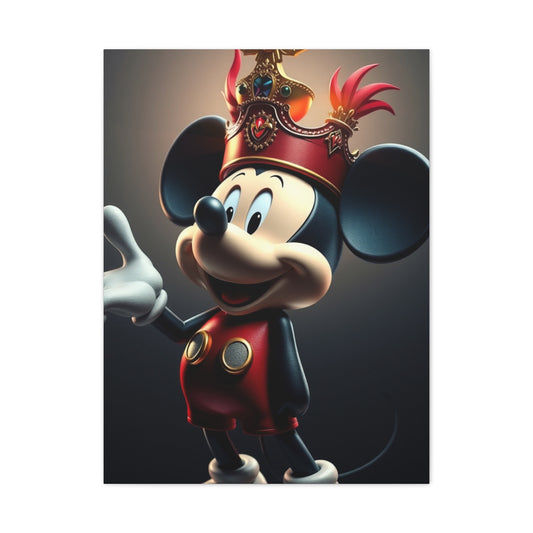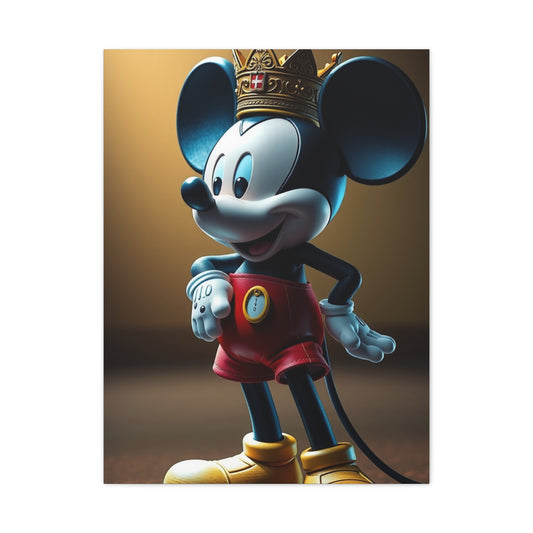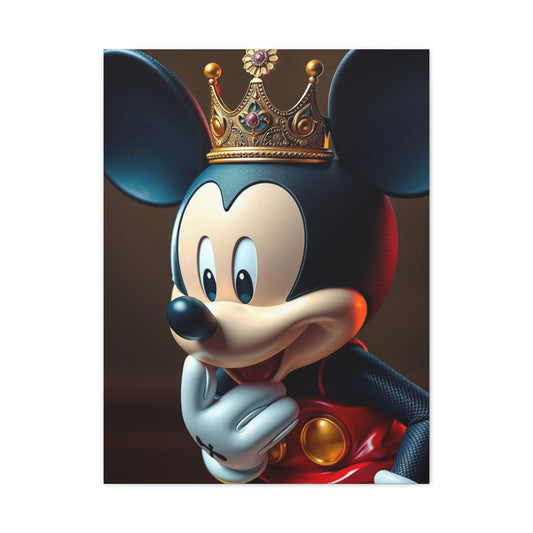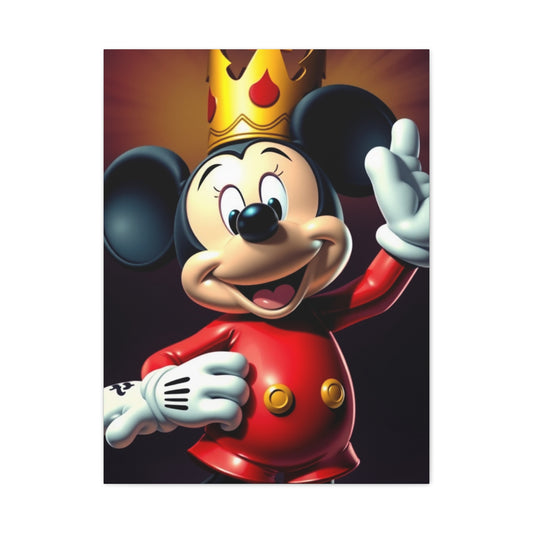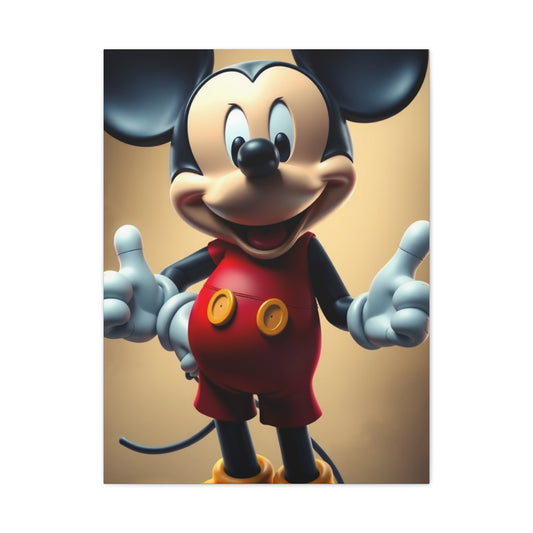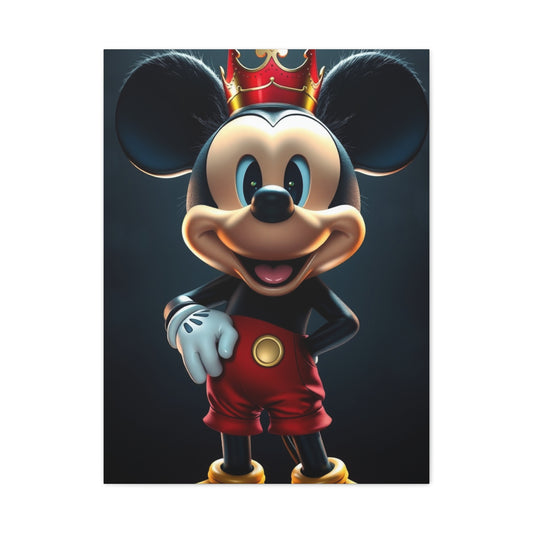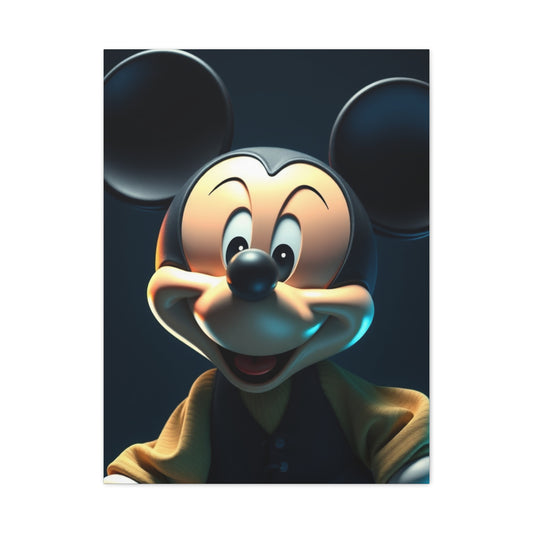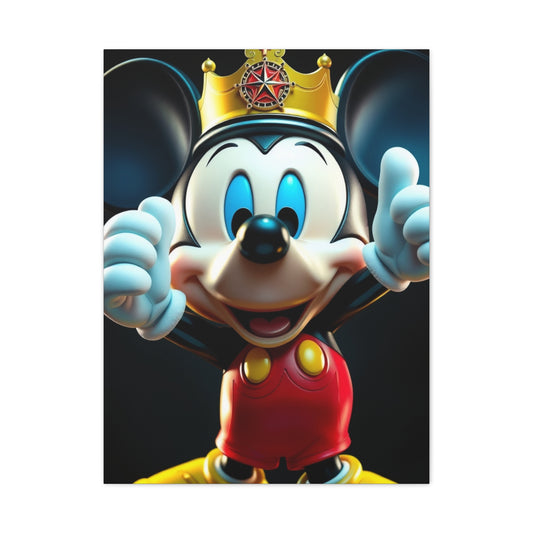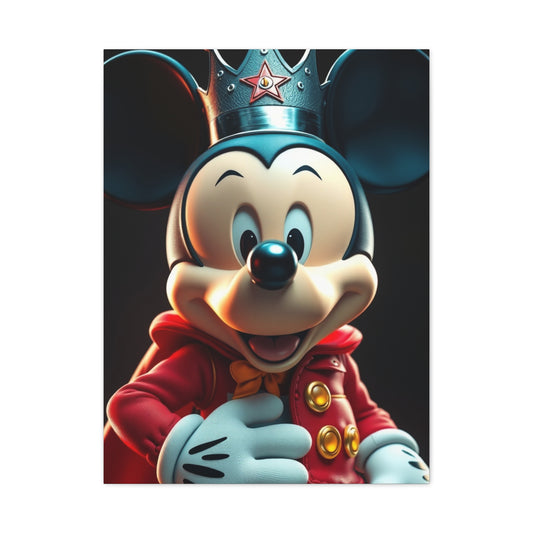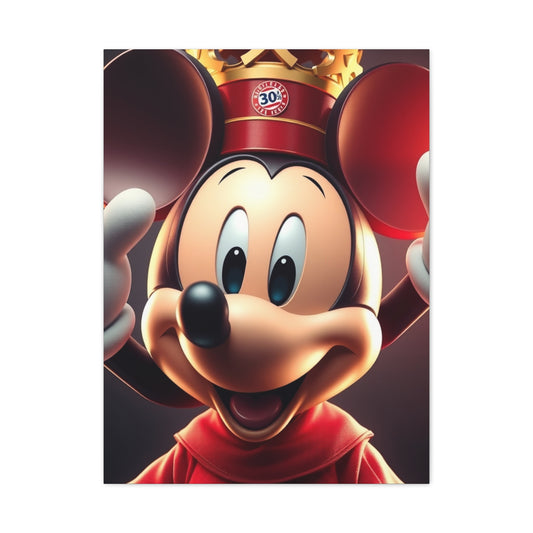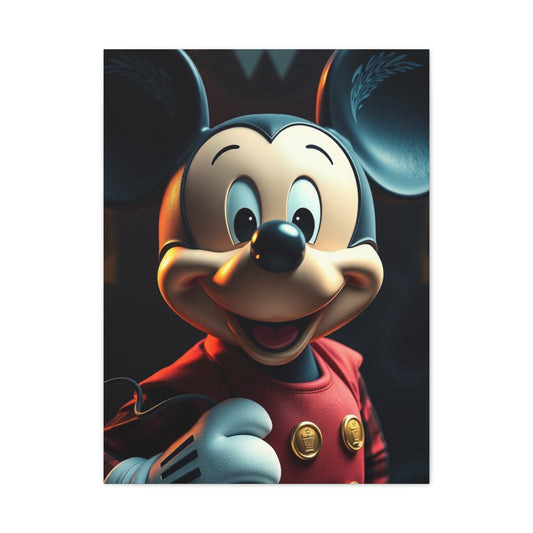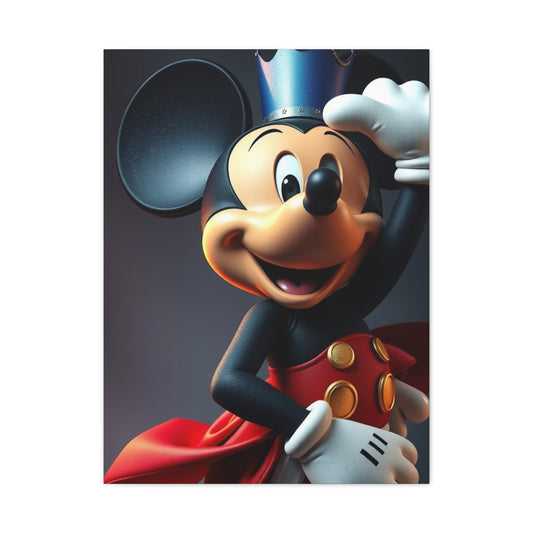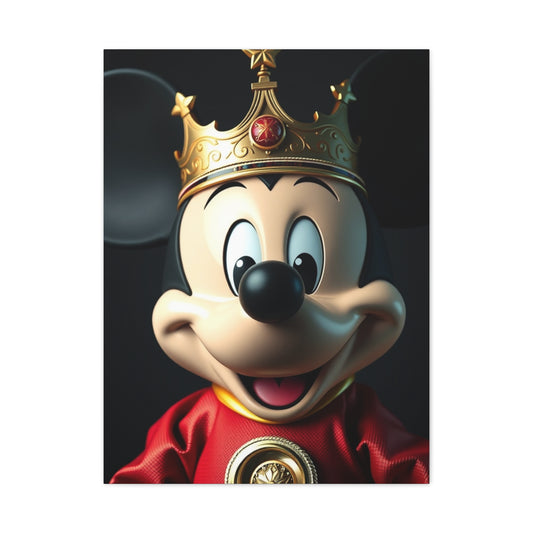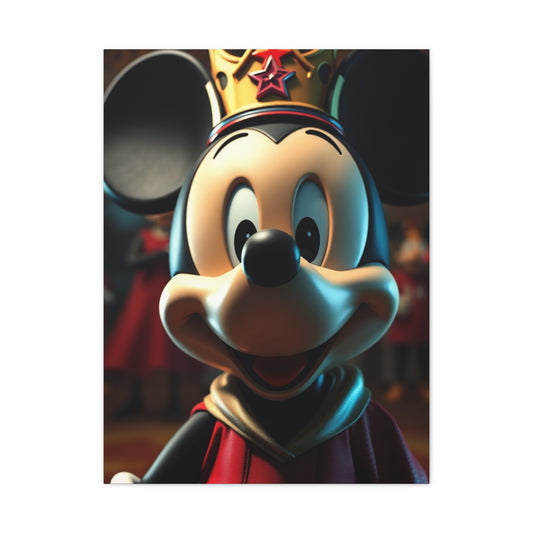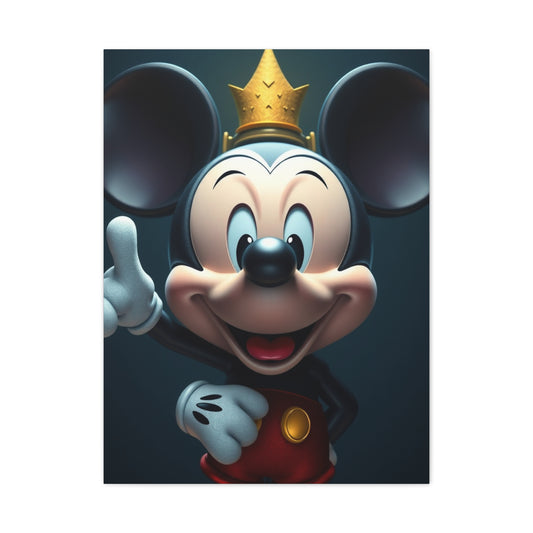Transform Your Space with Playful Mickey Mouse supreme Wall Art
Combining the timeless charm of Mickey Mouse with the edgy appeal of Supreme streetwear branding creates a unique and dynamic style statement for any space. Mickey Mouse Supreme wall art blends nostalgia, pop culture, and contemporary fashion, making it a bold choice for those looking to infuse their interiors with playful energy and urban cool. Whether you’re a fan of Disney, streetwear, or both, this fusion artwork transforms ordinary walls into standout galleries that reflect personality, creativity, and modern trends.
At the heart of Mickey Mouse Supreme art is a perfect balance between innocence and attitude. Mickey Mouse, the beloved Disney icon, evokes warmth, fun, and nostalgia. Supreme, known for its bold logos and influence on street culture, adds an unmistakable edge, infusing Mickey with a fresh, rebellious vibe. This juxtaposition appeals to a broad audience—from young adults embracing pop culture aesthetics to seasoned collectors appreciating clever mashups of classic and contemporary styles.
Visually, Mickey Mouse Supreme wall art often features iconic imagery like Mickey sporting Supreme’s signature red and white logo, sometimes combined with graffiti, abstract patterns, or urban textures. This vibrant and graphic style instantly enlivens any room, making it a perfect focal point for spaces like living rooms, studios, game rooms, or even trendy retail environments. The bold colors and clean lines add a modern flair, while the familiar character keeps the vibe approachable and fun.
One of the major perks of Mickey Mouse Supreme art is its versatility. It fits seamlessly into various interior themes—whether you lean toward minimalism, industrial loft aesthetics, or eclectic street-inspired décor. Displaying this art as a large canvas, framed print, or even as a mural can dramatically shift a room’s mood, injecting personality and conversation-starting coolness. Smaller pieces also work well in personal spaces like bedrooms or home offices, where you want a subtle nod to pop culture that inspires creativity.
Mickey Wall Art in Various Styles
Mickey Mouse-themed wall art offers an impressive versatility that allows it to seamlessly fit into almost any interior décor style. From minimalist prints with subtle nods to the iconic character to vibrant, colorful canvases full of life, Mickey art appeals to a wide range of tastes, making it a beloved choice not only for Disney fans but also for design enthusiasts looking to add a touch of whimsy and nostalgia to their spaces.
One of the most popular styles is minimalist monochrome art, which focuses on Mickey’s most recognizable feature: his distinctive ears. These black-and-white or silhouette prints are characterized by clean lines and a restrained color palette, making them an excellent fit for contemporary, Scandinavian, or even industrial-inspired interiors. Their understated design allows Mickey’s iconic image to shine without overwhelming the room, offering a sophisticated way for adults to incorporate a bit of Disney magic. These minimalist pieces pair beautifully with sleek furniture and modern décor elements, adding personality while maintaining an elegant and mature atmosphere.
On the other end of the spectrum, vibrant, multi-colored Mickey canvases bring energy, joy, and playfulness to any environment. Featuring bright reds, yellows, blues, and other lively hues, these artworks capture the cheerful spirit that Mickey embodies. They are perfect for children’s bedrooms, playrooms, or eclectic living areas where bold visuals contribute to a dynamic and fun ambiance. The lively colors and animated poses found in such pieces instantly uplift a space, sparking creativity and imagination, making them ideal for families and Disney lovers of all ages.
For those who prefer a more subtle touch of Disney magic without fully embracing a themed décor, there are plenty of refined options. A single graphic print, such as a stylized Mickey face, or a sleek metallic decal, can introduce charm and whimsy without dominating the visual space. These pieces work well in adult living rooms, nurseries, or cozy reading nooks, providing a tasteful yet playful accent. Their minimalist nature means they integrate easily with various décor styles, maintaining balance while offering a gentle reminder of Mickey’s timeless appeal.
In sum, Mickey Mouse wall art’s broad stylistic range—from minimalist chic to vibrant and playful—ensures that it can be adapted to any home environment. Whether you want a subtle nod to nostalgia or a bold celebration of Disney magic, Mickey-themed art provides endless possibilities to personalize your space with warmth, joy, and timeless charm.
How to Incorporate Mickey Wall Art in Tight Spaces
When dealing with limited floor space, making the most of vertical surfaces is key to creating a visually appealing and functional environment. Mickey Mouse wall art offers a variety of creative ways to add personality and charm without overcrowding your room. Thoughtful placement and design choices can help you maximize impact while maintaining a sense of openness.
One effective strategy is to create a gallery wall composed of smaller canvases or framed prints featuring different Mickey illustrations. By grouping these pieces together in a cohesive arrangement, you create a dynamic focal point that adds interest and texture without consuming precious floor area. Arranging the art vertically helps draw the eye upward, enhancing the room’s perceived height and making tight spaces feel more open and airy. You can mix different styles and sizes—from minimalist silhouettes to vibrant classic images—to add depth and variety while keeping the display balanced.
In addition to composition, choosing Mickey art with reflective or metallic finishes can further enhance the sense of space. Artworks featuring metallic accents or mirrored elements capture and amplify both natural and artificial light, brightening up darker corners and visually expanding the room. These shimmering surfaces bounce light around, adding dimension and energy to compact spaces. Whether it’s a subtle gold outline on a Mickey print or a polished metal wall sculpture, reflective features inject a touch of sophistication while helping to prevent a cramped feeling.
Placement is also crucial when working with limited space. Positioning Mickey wall art at eye level ensures it commands attention without overwhelming the room. This height makes the art accessible and engaging, allowing viewers to appreciate the details without bending or straining. It also maintains balance in the room’s visual flow, preventing walls from feeling cluttered or empty.
Beyond the immediate aesthetic impact, the choice of frames and materials can further elevate your Mickey wall art display in small spaces. Opting for thin, minimalist frames or even frameless canvases can prevent the artwork from feeling bulky or heavy, preserving a clean, streamlined look. Using light-colored frames or those in neutral tones helps keep the focus on the artwork itself while blending harmoniously with the room’s color palette. Conversely, a pop of color in the frame can highlight certain pieces and add playful energy, particularly fitting for Mickey-themed art.
Lighting plays a vital role in enhancing Mickey wall art, especially in smaller rooms. Strategically placed wall sconces, picture lights, or LED strips can spotlight your art, making it stand out while adding warmth and depth to the space. Adjustable lighting allows you to control the mood and focus, creating a gallery-like atmosphere that elevates the overall design. Additionally, natural light should be leveraged when possible, as it interacts beautifully with vibrant Mickey imagery and reflective finishes, animating the space throughout the day.
Texture is another subtle but effective tool when decorating small rooms with Mickey wall art. Incorporating mixed-media pieces such as fabric prints, embossed art, or layered collages adds tactile interest without intruding on physical space. These variations in texture engage the senses and provide an unexpected dimension to your walls, making them feel more curated and inviting.
Finally, don’t underestimate the power of strategic negative space around your Mickey art. Leaving intentional gaps between pieces or around a single artwork helps avoid visual clutter, giving each piece room to breathe. This approach enhances the clarity and impact of the art while maintaining a feeling of openness and balance—an essential factor in smaller rooms where every inch counts.
Personalized Mickey Wall Art Projects for a Unique Touch
For those who love to infuse their living spaces with personal creativity, designing your own Mickey Mouse wall art offers an immensely rewarding and fun way to customize your décor. DIY Mickey projects allow you to tailor each piece perfectly to your style, color scheme, and spatial needs while deepening your connection to the character and your home environment. Beyond aesthetics, these projects encourage creativity, resourcefulness, and even sustainability—making them meaningful on multiple levels.
One of the most popular and accessible methods is to use Mickey-shaped stencils for painting or spraying designs onto canvases, wooden panels, or even directly onto walls. Stenciling offers the precision needed to create sharp, recognizable shapes, yet allows for endless experimentation with different color palettes, sizes, and layering techniques. For example, you could create a vibrant series of overlapping Mickey silhouettes in a gradient of colors for a playful child’s room or opt for a monochromatic, oversized silhouette to complement a minimalist adult space.
For a textured, tactile approach, washi tape presents a fun alternative. The vast variety of colors, patterns, and widths available make it easy to craft geometric or abstract Mickey shapes that pop visually while adding depth to the piece. Whether you’re designing a bright, whimsical feature for a nursery or a more subtle, muted pattern for a modern living room, washi tape’s versatility makes it an ideal medium for personalizing your Mickey art.
Another eco-friendly avenue is repurposing recycled materials to assemble Mickey shapes. Collages made from old magazines, fabric scraps, or cardboard add character and charm while promoting sustainability. This technique can result in truly unique pieces that carry both artistic and environmental value, showing off your creativity and commitment to reducing waste. The tactile nature of these materials also adds a three-dimensional element that makes the artwork stand out on any wall.
Engaging children in these DIY projects can transform decorating into a joyful family affair. Kids can unleash their imaginations, develop fine motor skills, and experience the pride of seeing their creations displayed at home. Collaborative projects also create cherished memories and foster a love of art and design from an early age.
To create a rich, layered look, consider blending your homemade Mickey art with carefully curated ready-made prints or canvases. This combination adds texture and visual interest, creating a thoughtfully curated space that feels both dynamic and personal. It also allows for easy updates; you can swap out DIY pieces seasonally or as your tastes evolve, keeping your décor fresh without a full redesign.
Finding High-Quality Mickey Wall Art for Your Home
If crafting your own Mickey Mouse wall art isn’t your preferred route, rest assured that there’s no shortage of high-quality options available to bring that playful Disney charm into your living space. Whether you’re drawn to classic nostalgia or prefer a modern, sleek aesthetic, numerous platforms offer a vast array of Mickey-themed artworks—ranging from vintage posters and retro advertisements to contemporary digital prints and creative reinterpretations. This diversity makes it easy to find pieces that perfectly align with your style, space, and budget, allowing you to effortlessly enhance your décor with the iconic magic of Mickey Mouse.
Size Matters: Choosing Art That Fits Your Space
When shopping for Mickey wall art, one of the most important considerations is size—particularly in relation to your available space. What may appear as a modest-sized piece on a computer screen can quickly become overwhelming in a small room or, conversely, feel insignificant on a large, open wall. To avoid these pitfalls, it’s wise to measure your intended display area carefully before making a purchase. Many online retailers now provide helpful tools or visual guides that show artwork dimensions in relation to standard furniture or room layouts, giving you a realistic sense of scale and helping you select the perfect fit.
Several websites also organize their collections by size or by room type, such as “small prints for bedrooms” or “large canvases for living rooms.” These curated categories streamline the search process and make it easier to pinpoint pieces that suit your needs without the hassle of endless scrolling.
Quality Materials for Lasting Appeal
Aside from size, the quality of the materials used in the artwork plays a crucial role in both the visual impact and durability of your Mickey wall art. Prints produced on high-grade canvas or heavyweight archival paper typically offer richer, more vibrant colors and stand the test of time better than cheaper alternatives. The texture of canvas can also add a subtle depth and tactile quality to the art, enhancing its overall presence in your space.
Framing options are another key factor. A well-chosen frame not only protects your artwork but can elevate its look dramatically. Some frames bring a classic, polished feel, while others add a modern touch, complementing your room’s décor. If you prefer a minimalist style, frameless canvas wraps might be the best choice, allowing the artwork itself to speak without distraction.
Curating a Captivating Mickey Mouse Gallery Wall
A well-curated gallery wall featuring Mickey Mouse artwork is an excellent way to turn a blank or underutilized space into a lively and engaging focal point. Whether it’s in a living room, hallway, nursery, or creative studio, a Mickey-themed gallery wall can tell a visual story that blends nostalgia, personality, and artistic flair.
To start, select a cohesive collection of three to five pieces that vary in size, style, and medium. This variation creates visual interest and texture, preventing the display from feeling flat or monotonous. For example, you might combine a large canvas print of classic Mickey with smaller framed sketches, vintage posters, or even mixed media pieces. Including diverse mediums—such as digital art prints, watercolor illustrations, and subtle metal sculptures—adds depth and dimension, elevating the overall look.
When planning the layout, consider your desired aesthetic. Arranging the pieces symmetrically can produce a clean, polished, and modern vibe. This approach works particularly well in minimalist or contemporary spaces where order and balance are key. Conversely, opting for an asymmetrical or salon-style arrangement introduces a playful, eclectic charm that celebrates creativity and whimsy—qualities inherently tied to Mickey’s character. Using templates or paper cutouts of your artwork to map out the layout on the floor or wall beforehand can help you visualize and perfect your arrangement before committing.
For those living in rental spaces or hesitant to damage walls, removable hanging solutions like adhesive hooks, strips, or Velcro hangers are invaluable. These options provide a secure hold without leaving marks, allowing you to experiment with placement and switch out artwork as your collection grows or your style evolves.
Longevity and Presentation Tips for Mickey Wall Art
Preserving the vibrancy and condition of your Mickey-themed wall art is essential for maintaining its charm and impact over time. With a few thoughtful precautions and presentation techniques, you can ensure that your beloved pieces stay fresh, colorful, and visually striking for years to come.
One of the most important factors to consider is light exposure. Direct sunlight can cause colors in prints and canvases to fade gradually, dulling the artwork’s lively appeal. To protect your Mickey art, try to avoid placing it on walls that receive intense, prolonged sunlight. If this isn’t possible, investing in frames with UV-resistant glass or acrylic is a smart move. These protective materials filter harmful ultraviolet rays while allowing the artwork’s colors to shine through clearly. Not only do they guard against fading, but they also help shield your art from dust and physical damage.
When it comes to cleaning and upkeep, smooth-surfaced prints are particularly easy to maintain. Dust your Mickey wall art regularly using a soft, dry cloth or a gentle brush to prevent buildup. For canvases, be mindful not to use water or harsh cleaning agents, as these can damage the paint or finish. Keeping the surface clean helps preserve the sharpness and vibrancy of the image, ensuring your space always feels fresh and inviting.
To keep your décor dynamic and prevent visual fatigue, consider rotating your Mickey artwork seasonally or swapping pieces to reflect changing tastes. This simple practice injects new energy into your interior without the need for a full redesign. For instance, brighter, playful prints might brighten up the spring and summer months, while subtler, more muted tones could create a cozy atmosphere during fall and winter. Rotations also allow you to showcase different parts of your collection, making your space feel continually curated and personalized.
Maximizing Small Living Areas with Thoughtful Mickey Decor
In limited spaces, the arrangement and color palette of your Mickey wall art are paramount. Vertical alignments direct attention upward, making ceilings feel higher and rooms more expansive. Light colors and reflective finishes enhance openness and brightness.
Selecting a singular, striking Mickey silhouette can anchor your design without overwhelming the room. This minimalist approach often delivers the most stylish and sophisticated impact.
The enchanting world of beloved cartoon character artwork has evolved tremendously over the decades, transforming from simple nursery decorations to sophisticated statement pieces that grace modern homes worldwide. Among these iconic representations, the unmistakable silhouette of Disney's most famous mouse continues to capture hearts and imaginations across generations. This timeless figure, with his distinctive round ears and cheerful demeanor, has transcended traditional boundaries to become a symbol of joy, nostalgia, and artistic expression.
When we examine the profound impact of character-inspired wall décor, we discover layers of meaning that extend far beyond mere decoration. These artistic pieces serve as emotional anchors, connecting us to cherished memories while simultaneously creating new ones. The psychological comfort derived from familiar imagery cannot be understated—research in environmental psychology suggests that spaces adorned with meaningful artwork contribute significantly to overall well-being and satisfaction.
The phenomenon of incorporating beloved characters into sophisticated interior design schemes represents a cultural shift toward embracing playfulness in adult spaces. No longer confined to children's rooms, these artistic expressions have found their way into living areas, offices, and even commercial establishments. The key lies in selecting pieces that balance whimsical charm with aesthetic refinement, creating environments that feel both nostalgic and contemporary.
Contemporary homeowners increasingly seek ways to personalize their living spaces while maintaining design coherence. Character-inspired artwork offers an ideal solution, providing instant personality and conversation-starting potential. The versatility of such pieces allows them to complement various design styles, from minimalist modern to eclectic bohemian, proving that beloved characters can indeed coexist with sophisticated décor sensibilities.
Curating the Perfect Gallery Wall Collection
Creating a compelling gallery wall featuring character artwork requires careful consideration of scale, color harmony, and visual flow. The most successful collections combine various sizes, orientations, and artistic styles while maintaining a cohesive theme that ties the entire arrangement together. This approach prevents the display from appearing random or overwhelming while allowing each individual piece to contribute to the overall narrative.
Color coordination serves as the foundation of any successful gallery wall. While character artwork often features bright, bold hues, sophisticated curation involves selecting pieces that share common color threads or complementary tones. This might mean choosing artworks that all incorporate similar accent colors, or selecting pieces that progress through a carefully planned color gradient across the wall space.
The rhythm and spacing of pieces within a gallery wall arrangement significantly impact the overall visual effect. Professional designers recommend maintaining consistent spacing between frames—typically 2-3 inches—while varying the actual frame sizes and orientations to create visual interest. Larger statement pieces should serve as anchor points, with smaller works arranged to support and enhance these focal elements.
Texture variation within a gallery wall adds depth and sophistication to the overall display. Mixing different artistic mediums—such as canvas prints, framed photographs, metal artwork, and even three-dimensional elements—creates a rich, layered effect that invites closer inspection. This textural diversity prevents the wall from appearing flat or monotonous while showcasing the versatility of character-inspired artwork.
Lighting considerations cannot be overlooked when planning a gallery wall. Proper illumination not only protects artwork from UV damage but also enhances colors and details that might otherwise be lost in poorly lit spaces. Track lighting, picture lights, or strategically placed accent lamps can dramatically improve the presentation while creating a museum-quality display within the home environment.
Reshaping Character-Based Street Art
The artists working in this space represent a diverse group of creators, each bringing their own unique perspective to the intersection of character design and urban aesthetics. Some come from traditional fine arts backgrounds, while others emerged from graffiti and street art scenes. This diversity of influences contributes to the richness and variety of styles we see in contemporary character-inspired wall art.
Many of these artists began their careers creating unauthorized interpretations of popular characters, developing their skills in the underground art scene before being recognized by mainstream galleries and commercial collaborators. This grassroots origin gives their work an authenticity that resonates with audiences who appreciate art that emerges from genuine cultural movements rather than corporate marketing initiatives.
The most successful artists in this field have developed signature styles that make their work instantly recognizable while still honoring the source material. They understand how to capture the essence of beloved characters while translating them into their own visual language. This requires not just technical skill, but also deep understanding of what makes these characters so enduring and beloved.
Digital tools have revolutionized how these artists work, allowing them to experiment with colors, compositions, and effects that would be difficult or impossible to achieve through traditional media. However, many still prefer to work in physical media for their final pieces, believing that the texture and dimensionality of paint, ink, and mixed media create a more engaging viewing experience than digital prints.
The commercial success of these artists has opened doors for a new generation of creators who see character interpretation as a legitimate artistic pursuit. Art schools now offer courses in pop culture art and character design, recognizing these fields as valid areas of artistic exploration. This institutional support has helped elevate the overall quality and sophistication of work being produced in this genre.
Lighting Design for Artwork Display
Proper lighting transforms character artwork from simple wall decoration to dramatic focal points that enhance entire room atmospheres. Understanding different lighting types, their characteristics, and appropriate applications ensures that artwork receives optimal illumination while contributing to overall lighting design schemes.
Natural lighting provides the most accurate color representation but requires careful management to prevent UV damage and excessive brightness variations throughout the day. Strategic placement relative to windows, combined with UV-filtering treatments, allows artwork to benefit from natural illumination while remaining protected from harmful effects. Understanding the sun's path throughout the day helps optimize positioning for consistent, flattering natural light.
Ambient lighting creates general illumination that provides background visibility while establishing overall room mood. Character artwork benefits from adequate ambient lighting that prevents harsh contrasts between illuminated pieces and surrounding darkness. Proper ambient levels ensure comfortable viewing while maintaining the dramatic impact of focused artwork lighting.
Task lighting serves specific functional needs but can inadvertently affect artwork visibility and appearance. Desk lamps, reading lights, and under-cabinet fixtures might cast unwanted shadows or create glare on artwork surfaces. Coordinating task lighting placement with artwork positions prevents conflicts while ensuring both aesthetic and functional needs are met effectively.
Accent lighting specifically targets artwork to create dramatic highlighting effects that draw attention and enhance visual impact. Track lighting, picture lights, and strategically placed spotlights can transform character artwork into gallery-worthy displays. However, accent lighting must be carefully controlled to prevent heat damage and ensure even illumination across entire pieces.
Color temperature considerations affect how artwork colors appear under artificial illumination. Warm light sources enhance red, orange, and yellow tones while cool sources emphasize blue and green hues. Understanding artwork color compositions helps select appropriate lighting color temperatures that maintain intended aesthetic effects while providing comfortable general illumination.
Creating Character-Inspired Wall Art
The process of creating character-inspired wall art involves multiple stages, each requiring specific skills and careful attention to detail. Beginning with initial concept development, artists must balance respect for source material with their own creative vision, ensuring that the final piece honors both influences while creating something genuinely new and engaging.
Sketching and preliminary design work allow artists to experiment with different approaches before committing to final materials. This stage often involves creating multiple variations, exploring different compositions, color schemes, and stylistic approaches. Many artists create extensive series of preliminary sketches, treating this exploratory phase as an essential part of the creative process rather than simply preparation for the "real" work.
Material selection significantly impacts both the visual appearance and longevity of finished pieces. Canvas provides a traditional fine art feel and allows for easy framing and display, while wood panels offer texture and durability that many collectors appreciate. Alternative surfaces like metal or acrylic can create unique visual effects but require specialized preparation and painting methods.
Paint selection requires careful consideration of both immediate visual impact and long-term durability. Acrylic paints offer vibrant colors and quick drying times, making them popular for layered compositions, while oil paints provide richer colors and longer working times that some artists prefer for detailed work. Many contemporary artists combine multiple media, using spray paint for bold areas, markers for fine details, and digital elements for precise graphic components.
The layering process requires patience and careful planning. Base layers establish overall composition and color relationships, while subsequent layers add detail, depth, and visual interest. Many pieces involve dozens of individual layers, each serving a specific purpose in the overall composition. This methodical approach ensures that finished pieces have the visual richness and complexity that make them engaging for long-term viewing.
Finishing work protects completed pieces and enhances their visual appeal. Proper varnishing or sealing prevents color fading and damage from environmental factors, while professional framing presents pieces in ways that complement their aesthetic and protect their value. Many artists work closely with framing specialists to ensure that presentation enhances rather than detracts from their artistic vision.
Character Art in Youth Spaces: Bedrooms and Social Areas
The integration of character-inspired wall art into spaces specifically designed for young people requires understanding their unique needs, preferences, and lifestyle patterns. These environments must balance bold visual statements with practical considerations like study space, social interaction, and personal privacy.
Bedroom design considerations include creating environments that support both rest and personal expression. Character art can serve as focal points that reflect personality while avoiding overstimulation that might interfere with sleep. Placement strategies often involve grouping pieces on accent walls while keeping sleeping areas more visually calm.
Study space integration requires careful attention to how artwork influences concentration and focus. While some students find character art motivating and inspiring, others may find it distracting during intensive study sessions. Flexible arrangements that allow for covering or repositioning artwork can provide options for different activities and moods.
Social interaction enhancement occurs when character art serves as conversation starters and shared references for friend groups. Pieces that reference contemporary culture or inside jokes can strengthen social bonds while reflecting group identity. The choice of specific characters and styles often signals membership in particular social communities.
Storage and display flexibility becomes important as young people's interests and living situations change frequently. Removable mounting systems, portable pieces, and modular display arrangements allow for easy reconfiguration when moving between homes, dorms, or apartments.
Personal growth accommodation requires recognizing that aesthetic preferences may evolve as young people mature. Pieces that can be recontextualized or reinterpreted for different life stages provide better long-term value than those tied to specific age-appropriate themes.
Curating Gallery Walls with Character-Inspired Collections
Creating effective gallery wall displays with character-inspired pieces requires understanding both traditional art exhibition principles and the specific visual properties of cartoon-influenced imagery. Successful arrangements balance visual impact with viewing comfort while telling coherent stories through careful curation.
Composition principles from traditional gallery design apply to character art but require modification to account for the bold colors and high contrast typical of this genre. Visual weight distribution becomes crucial when working with pieces that may vary dramatically in color intensity and graphic complexity.
Scale relationships between different pieces in groupings require careful consideration to maintain visual harmony while creating interesting variety. Mixing different sizes can add dynamism to displays, but proportion relationships must be carefully planned to avoid having smaller pieces disappear next to dominant larger works.
Color coordination strategies help create cohesive displays from pieces that may feature very different color palettes. Common approaches include grouping pieces with similar color temperatures, creating rhythmic color patterns across displays, or using neutral matting and framing to unify diverse pieces.
Thematic organization allows collectors to create narrative connections between different pieces while maintaining visual coherence. Themes might focus on specific characters, artistic styles, cultural references, or time periods, providing intellectual frameworks that enhance viewing experiences.
Lighting integration requires attention to how different pieces respond to various lighting conditions. Character art often features reflective elements or special printing methods that require specific lighting angles to be fully appreciated. Professional lighting consultation can help optimize display conditions for entire collections.
Conclusion
The world of Mickey Mouse Supreme wall art represents a fascinating intersection of childhood nostalgia, contemporary design sensibilities, and artistic expression that continues to evolve and inspire homeowners across the globe. Through this comprehensive exploration, we have discovered that character-inspired artwork transcends simple decoration to become a powerful tool for personal expression, psychological well-being, and cultural connection within our living spaces.
From the strategic selection of premium materials and sophisticated artistic interpretations to the careful consideration of color theory and lighting design, every aspect of incorporating character artwork into modern homes requires thoughtful planning and execution. The evolution from simple children's room decorations to gallery-worthy statement pieces demonstrates the remarkable versatility and enduring appeal of beloved character imagery when approached with creativity and respect for both artistic integrity and design principles.
The psychological benefits derived from surrounding ourselves with familiar, positive imagery cannot be overstated. Character artwork provides comfort, security, and joy while serving as conversation starters that facilitate social connections and shared experiences among family members and friends. These emotional benefits, combined with the aesthetic enhancement character art provides, create living environments that nurture both the soul and the eye.
As we move forward into an increasingly digital age, the integration of smart home technologies and interactive elements ensures that character artwork remains relevant and engaging for future generations. However, the fundamental appeal of these beloved figures lies not in technological enhancement but in their ability to evoke universal emotions and memories that connect us to our shared humanity.
Whether displayed as single statement pieces or comprehensive gallery walls, character artwork offers endless possibilities for personal expression and space transformation. The key to success lies in balancing nostalgic appreciation with contemporary design sensibilities, creating displays that honor the past while embracing present and future possibilities. Through careful selection, thoughtful placement, and proper care, character artwork investments provide decades of enjoyment while potentially appreciating in both sentimental and monetary value.
The future of character artwork promises even more innovative interpretations, materials, and presentation methods that will continue to surprise and delight collectors and casual enthusiasts alike. As artists push creative boundaries while honoring beloved character legacies, we can anticipate increasingly sophisticated options that satisfy both nostalgic longings and discriminating design tastes. This ongoing evolution ensures that character artwork will remain a vital component of personalized interior design for generations to come.
Ultimately, the decision to incorporate Mickey Mouse Supreme wall art into our homes reflects a conscious choice to embrace joy, celebrate creativity, and maintain connections to the wonder and imagination that enrich human experience. These artistic expressions serve as daily reminders that playfulness and sophistication need not be mutually exclusive, and that our living spaces can simultaneously serve as sanctuaries of comfort and galleries of personal expression.
The journey of selecting, displaying, and caring for character artwork becomes part of the larger narrative of creating homes that truly reflect our personalities, values, and aspirations. Through these carefully chosen pieces, we communicate who we are, what we value, and how we choose to engage with the world around us. In this way, character artwork transcends decoration to become an integral part of the human experience of home, belonging, and self-expression that will continue to evolve and inspire for countless years to come.

